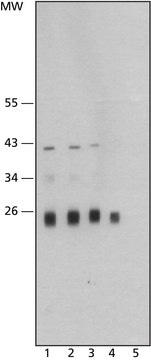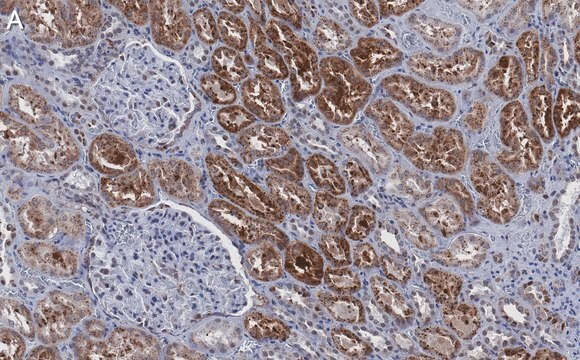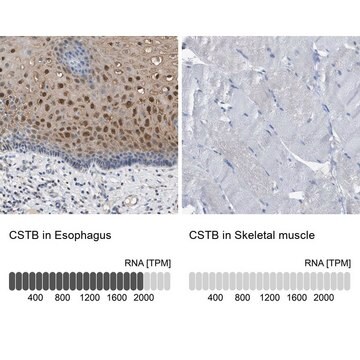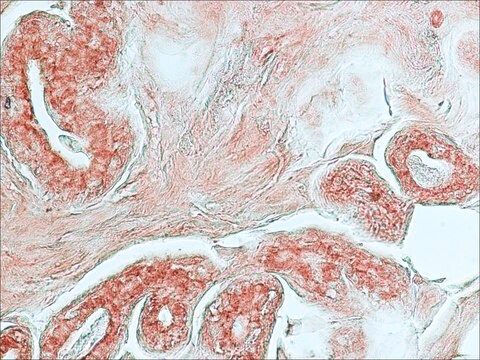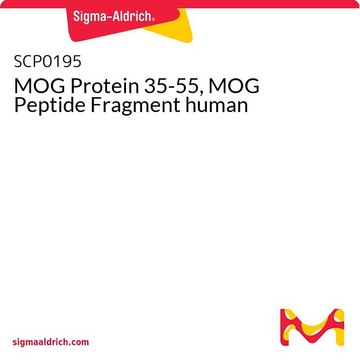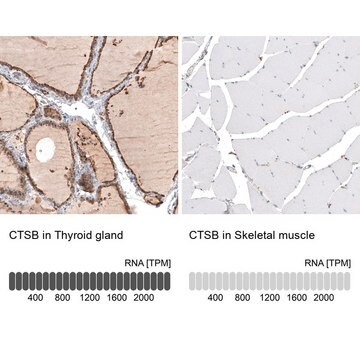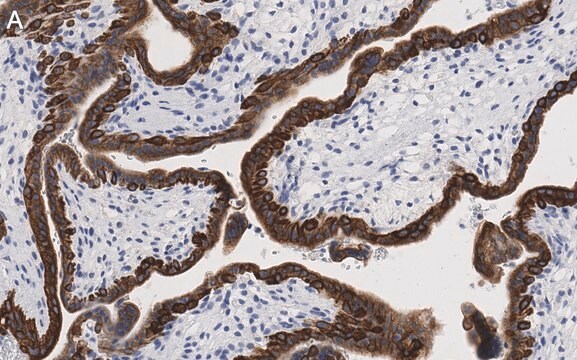C6243
Anti-Cathepsin B antibody, Mouse monoclonal
clone CB59-4B11, purified from hybridoma cell culture
Synonym(s):
Anti-APPS, Anti-CPSB, Anti-RECEUP
About This Item
Recommended Products
biological source
mouse
conjugate
unconjugated
antibody form
purified immunoglobulin
antibody product type
primary antibodies
clone
CB59-4B11, monoclonal
form
buffered aqueous solution
mol wt
antigen ~25 kDa
species reactivity
rat, human
concentration
~1.5 mg/mL
technique(s)
immunohistochemistry: suitable
indirect ELISA: suitable
western blot: 4-8 μg/mL using HCT-116 cells.
isotype
IgG1
UniProt accession no.
shipped in
dry ice
storage temp.
−20°C
target post-translational modification
unmodified
Gene Information
human ... CTSB(1508)
rat ... CTSB(64529)
General description
Immunogen
Application
Biochem/physiol Actions
Monoclonal Anti-Cathepsin B specifically recognizes human1 and rat1 cathepsin B (~ 25 kDa). The antibody epitope resides within the peptide sequence EPGYSP which corresponds to amino acids 212-217 of human cathepsin B. The antibody does not cross react with the closely related lysosomal cysteine proteases: cathepsins L, H, K, S, V, and W.
Cathepsins significantly takes part in the immune response, by processing antigens into peptides for its presentation through MHC class II molecules.
Physical form
Disclaimer
Not finding the right product?
Try our Product Selector Tool.
recommended
related product
Storage Class Code
10 - Combustible liquids
WGK
WGK 1
Flash Point(F)
Not applicable
Flash Point(C)
Not applicable
Choose from one of the most recent versions:
Already Own This Product?
Find documentation for the products that you have recently purchased in the Document Library.
associated with suppression of angiogenesis
the Endo- and Exopeptidase Activities of Cathepsin B
Our team of scientists has experience in all areas of research including Life Science, Material Science, Chemical Synthesis, Chromatography, Analytical and many others.
Contact Technical Service